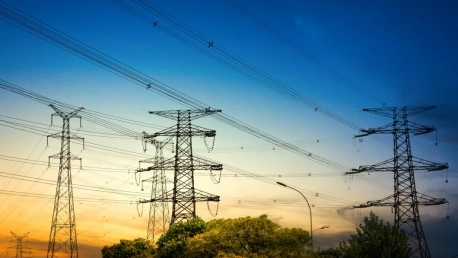New York State’s ambitious environmental targets, as encapsulated by the Climate Leadership and Community Protection Act (CLCPA), have positioned it at the forefront of American clean energy initiatives. While these pioneering policies aim to drastically reduce greenhouse gas emissions, they also pose unique challenges to the state’s power grid, managed by the New York Independent System Operator (NYISO). Balancing the increasing electricity demands with the urgency to phase out fossil fuels and boost renewable energy presents a crucial test for New York’s grid reliability.
Navigating the Rising Tide of Electricity Demand
The Electrification Wave and Its Implications
As New York rides the electrification wave, the state’s energy consumption is swelling. The inception of tech-centric industries such as semiconductor manufacturing and burgeoning data centers draws heavily on the power supply. This uptick is further amplified by a residential shift from fossil fuel-based heating systems to electric heat pumps. These pumps, while environmentally friendly, push up the winter peaks of electricity demand, signifying a seismic shift in consumption patterns. This move toward mass electrification serves not only as a catalyst for innovation but also as a beacon, spotlighting the dire need for a robust power grid to adhere to the state’s eco-conscious vision.
Projected Peak Load Challenges and Resource Deficiencies
With winter peaks anticipated to rise, the NYISO’s report casts a sharp focus on the early 2030s, a critical juncture where potential resource deficiencies might emerge. If natural gas supplies dwindle and no suitable alternative energy sources are in place, New York could confront significant grid challenges. This prediction prompts action, urging the state to reinforce its electric generation capacities swiftly and thoughtfully, ensuring the ambitious climate goals of the CLCPA are met without compromise to the grid’s integrity. The race against time to address these peak load challenges embodies the state’s determination to fuse environmental stewardship with technological advancement.
Ensuring Reliability amid Energy Transition
The Retiring Fossil Fuel Dilemma
New York’s journey towards a sustainable future is not without its pitfalls, notably the pace at which retiring fossil-fueled plants outstrip the entry of new clean energy. This disparity poses a problem for maintaining grid reliability margins, underlining the dire need for rapid and expansive development in the realm of renewable energy and corresponding infrastructure. The grid’s reliability hangs in the balance as the state negotiates this transition, striving to mitigate the reliability gap with a steadfast expansion in green energy solutions.
Renewable Progress and Infrastructure Imperatives
Despite the heralding of unprecedented renewable energy generation records, the NYISO report emphasizes that taller peaks in this progress are necessary. The investments in renewable energy infrastructure must swell in proportion to the rising electric demand to maintain the continuous supply of power. Achieving grid reliability in the face of these ambitious environmental targets requires rolling out extensive infrastructural improvements. The state’s renewable momentum must be matched with concrete steps to fortify the grid against the dual pressures of growing demand and declining fossil fuel reliance.
Governor Hochul’s Clean Energy Affirmation
New York’s Leadership in Renewable Initiatives
Governor Hochul’s stance reinforces the state’s commitment to pursuing a green agenda. Her acknowledgment of New York’s leadership in renewable initiatives, such as the introduction of the nation’s first commercial-grade offshore wind project, creates a tapestry of ambitious environmental intentions. The governor has cast a spotlight on the necessity of intertwining these initiatives with a steadfast focus on grid reliability, expressing confidence that New York will not falter in its pledge to intertwine environmental sustainability with robust infrastructure.
Economic Considerations and Consumer Impact
The pivot to renewable energy is not solely a matter of sustainability but also an economic equation. The financial sustainability of initiatives like offshore wind turbine projects is pivotal, as is the impact these ventures will have on consumers. In the fray of this energy transition, Governor Hochul does not shy away from acknowledging the fine balance between maintaining affordable rates and investing in vital energy infrastructure. Addressing these economic considerations, her administration aims to wield the balance judiciously, ensuring that the path toward a clean energy future is economically viable for all New Yorkers.
The Complex Path Forward
Balancing Aspirational Goals with Practical Realities
As New York State strides toward a greener horizon, it seeks to harmonize its lofty climate aspirations with the everyday practicalities of power supply. The state’s foray into expanding renewable capacity and modernizing transmission systems is an intricate dance—a continual balancing act. To meet the demand and phase out fossil fuels without jeopardizing grid reliability, New York recognizes the essential synthesis of climate-conscious policies with resilient infrastructure—and embraces the challenge.
The Incremental Approach to Climate Action
New York State stands at the forefront of the U.S. clean energy movement, thanks to the Climate Leadership and Community Protection Act (CLCPA). This ambitious law sets a high bar for environmental stewardship, championing a significant decrease in greenhouse emissions. The task of transforming these goals into reality falls upon the New York Independent System Operator (NYISO), which oversees the state’s electrical infrastructure. As New York’s energy demands swell, there’s an urgent need to transition away from carbon-based fuels and ramp up renewable energy production. This shift is pivotal for maintaining the state’s power grid reliability. NYISO is now navigating this complex terrain, steering New York towards a sustainable future while addressing the immediate challenges of integrating green energy sources without compromising power dependability for its residents and businesses. This delicate balancing act stands as a key test of resilience for New York’s grid in the face of evolving energy landscapes.









